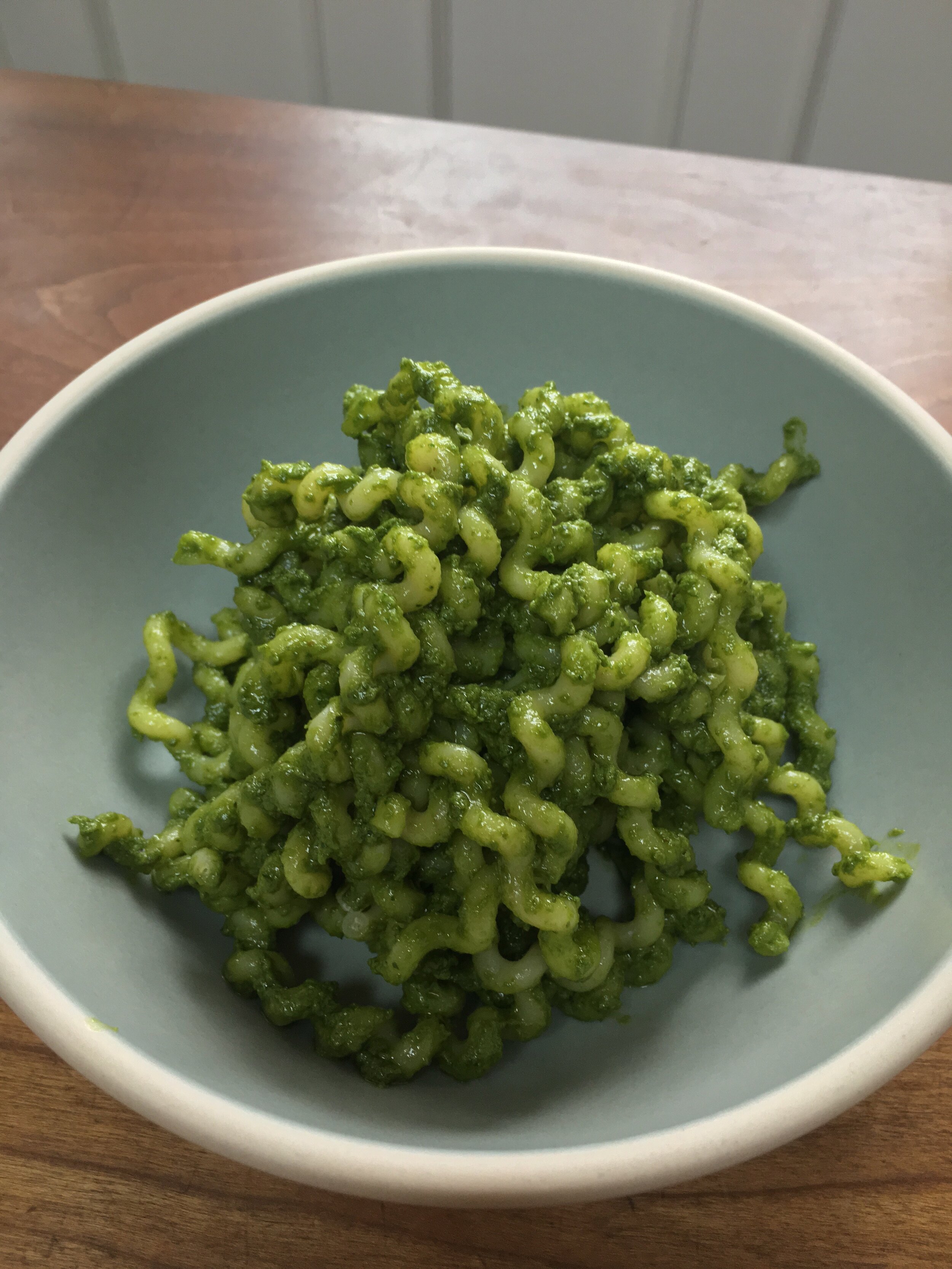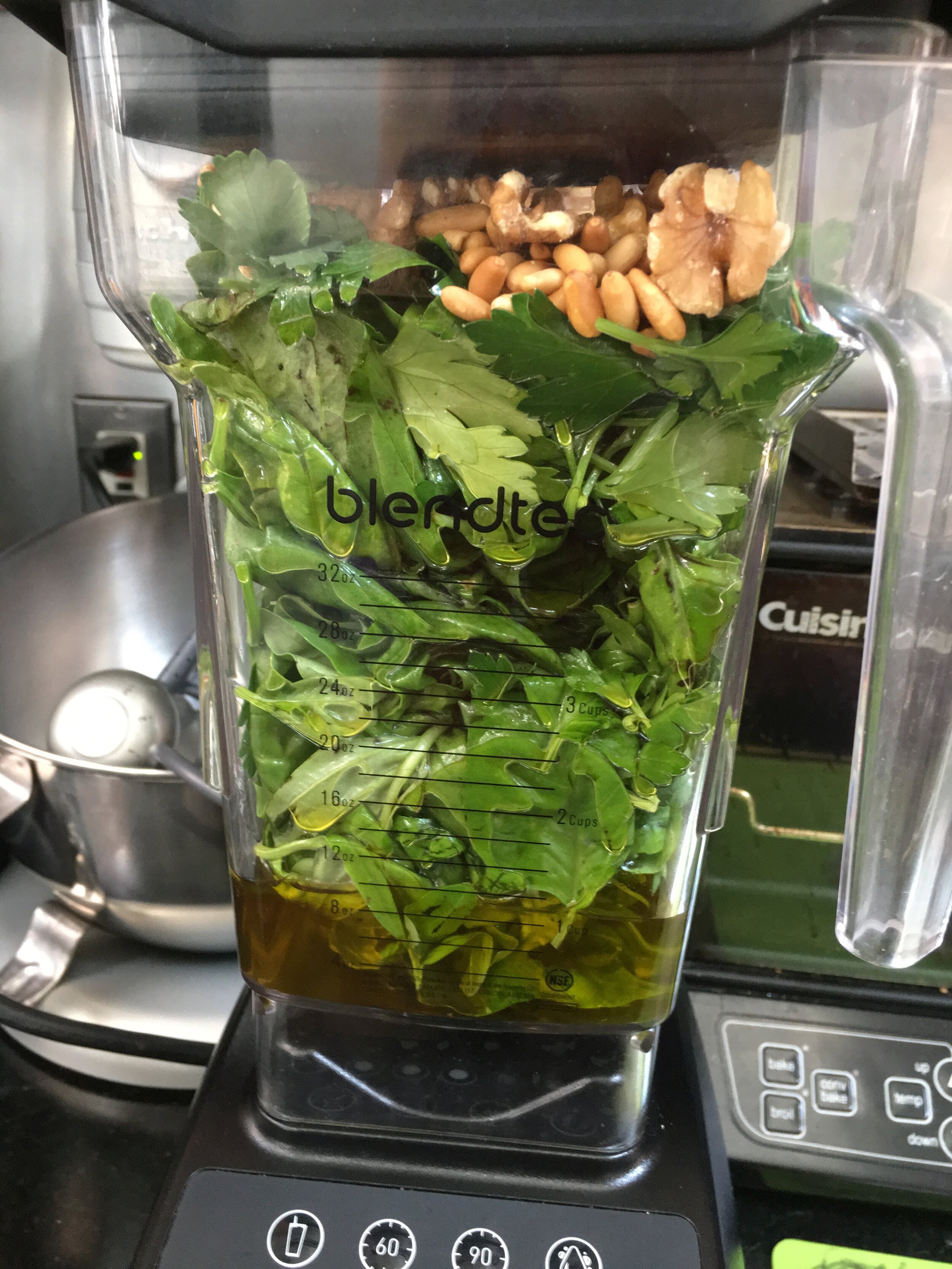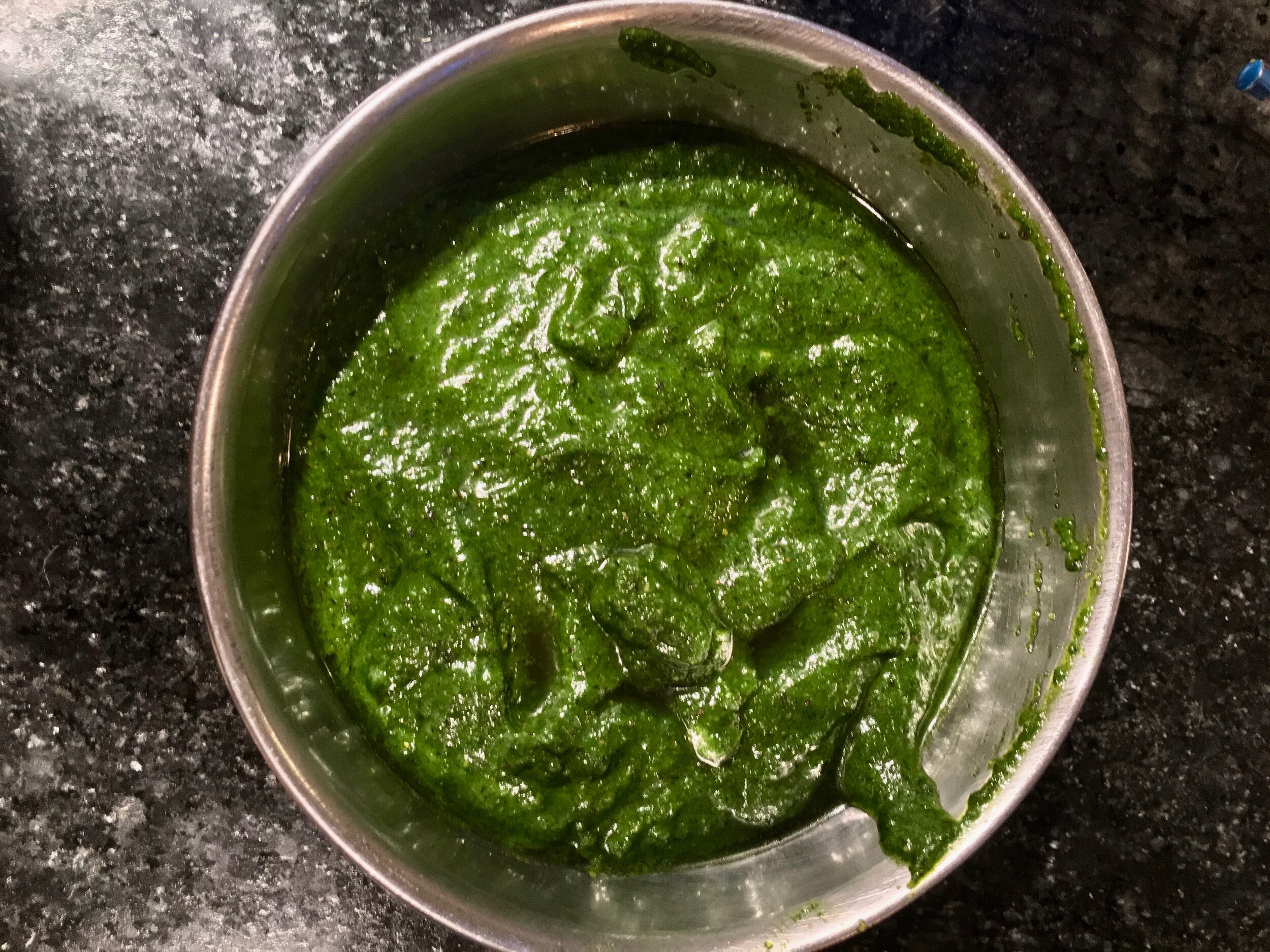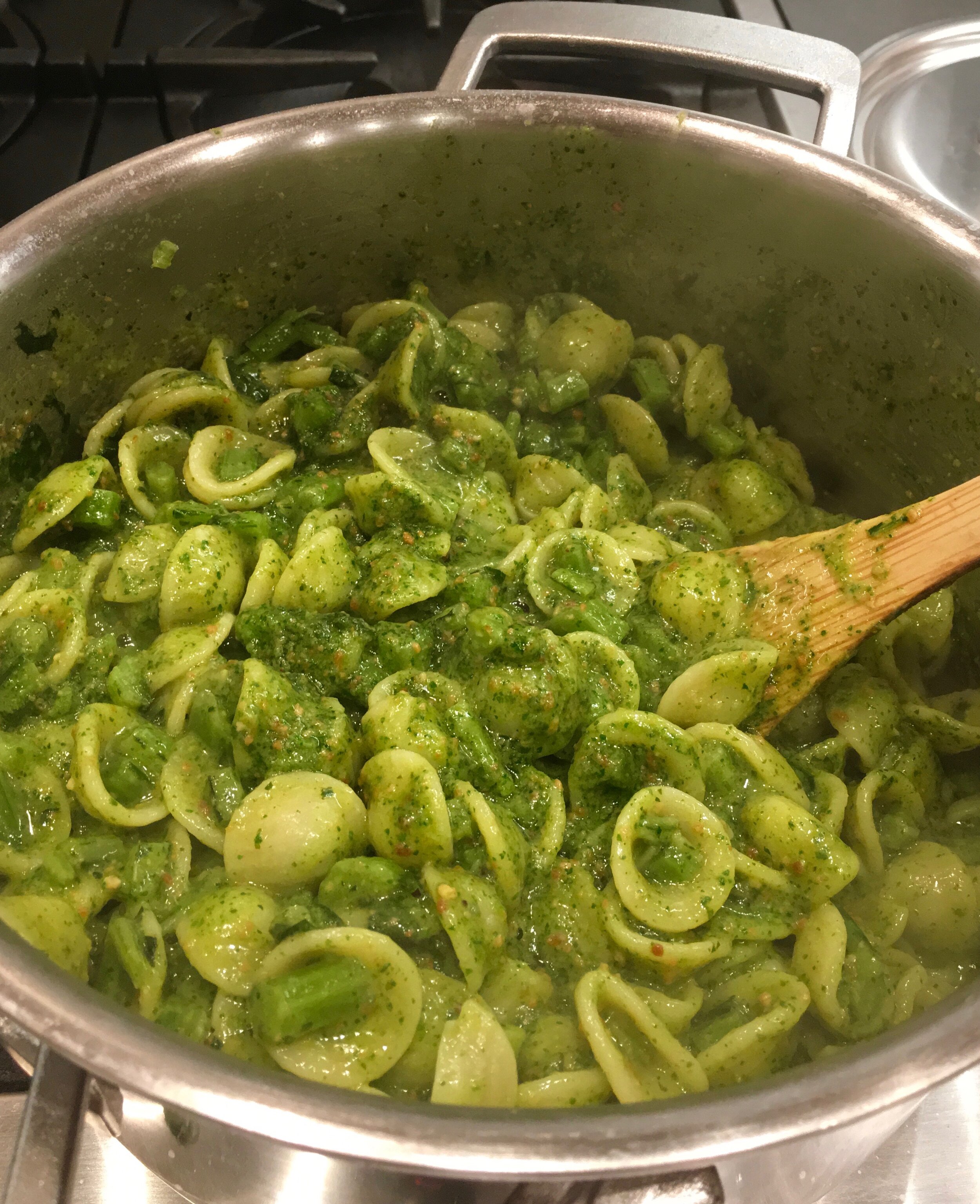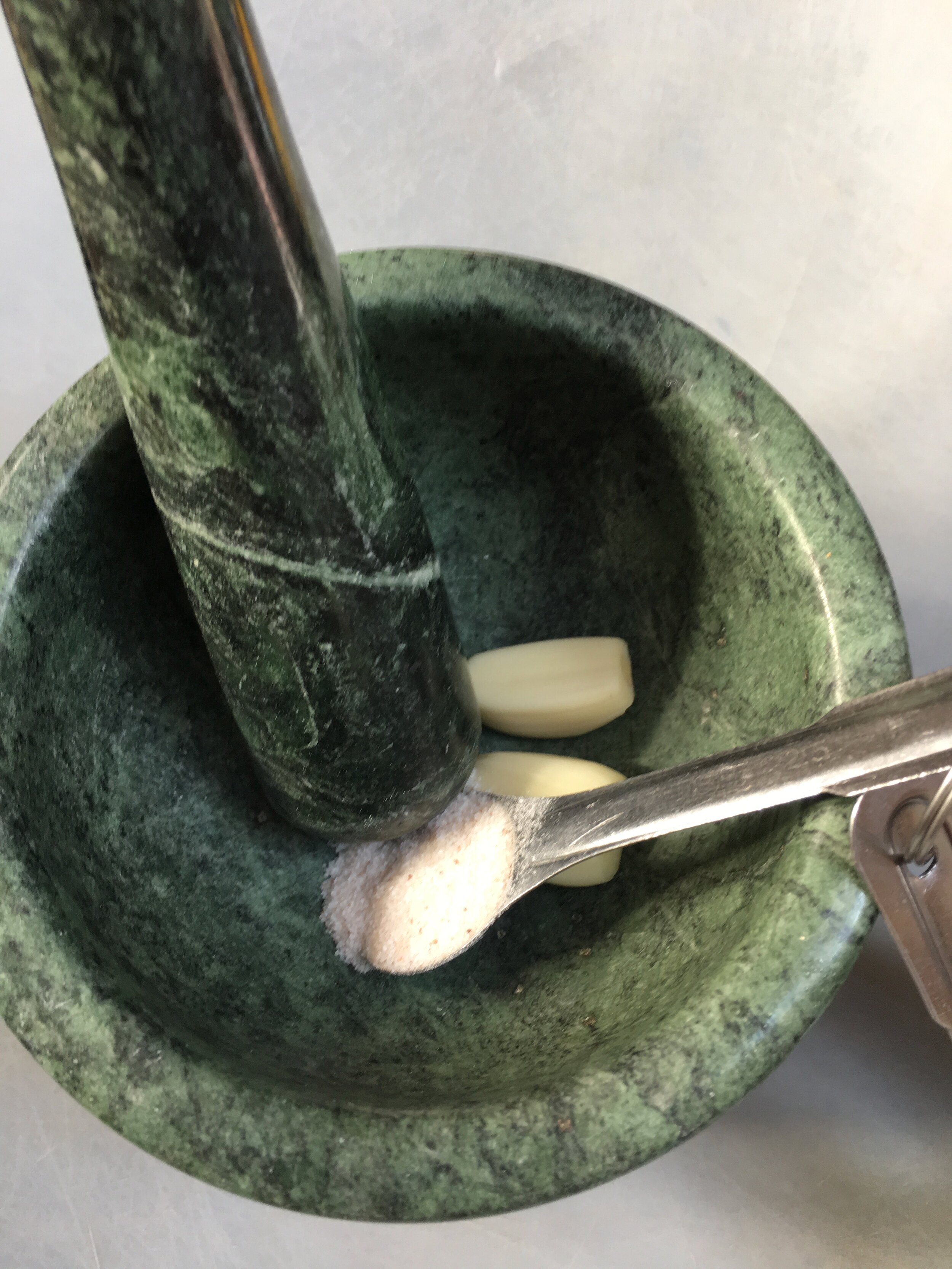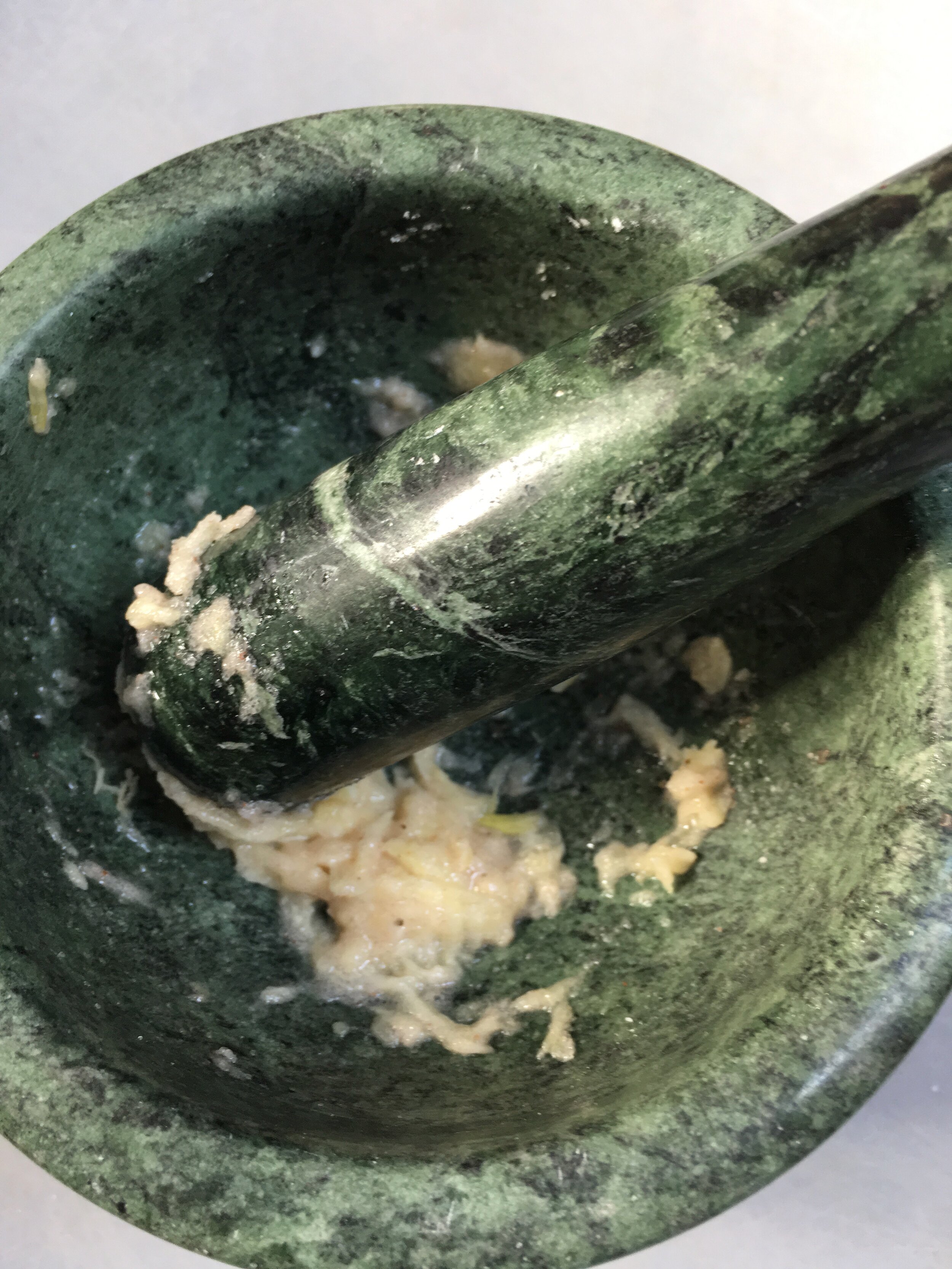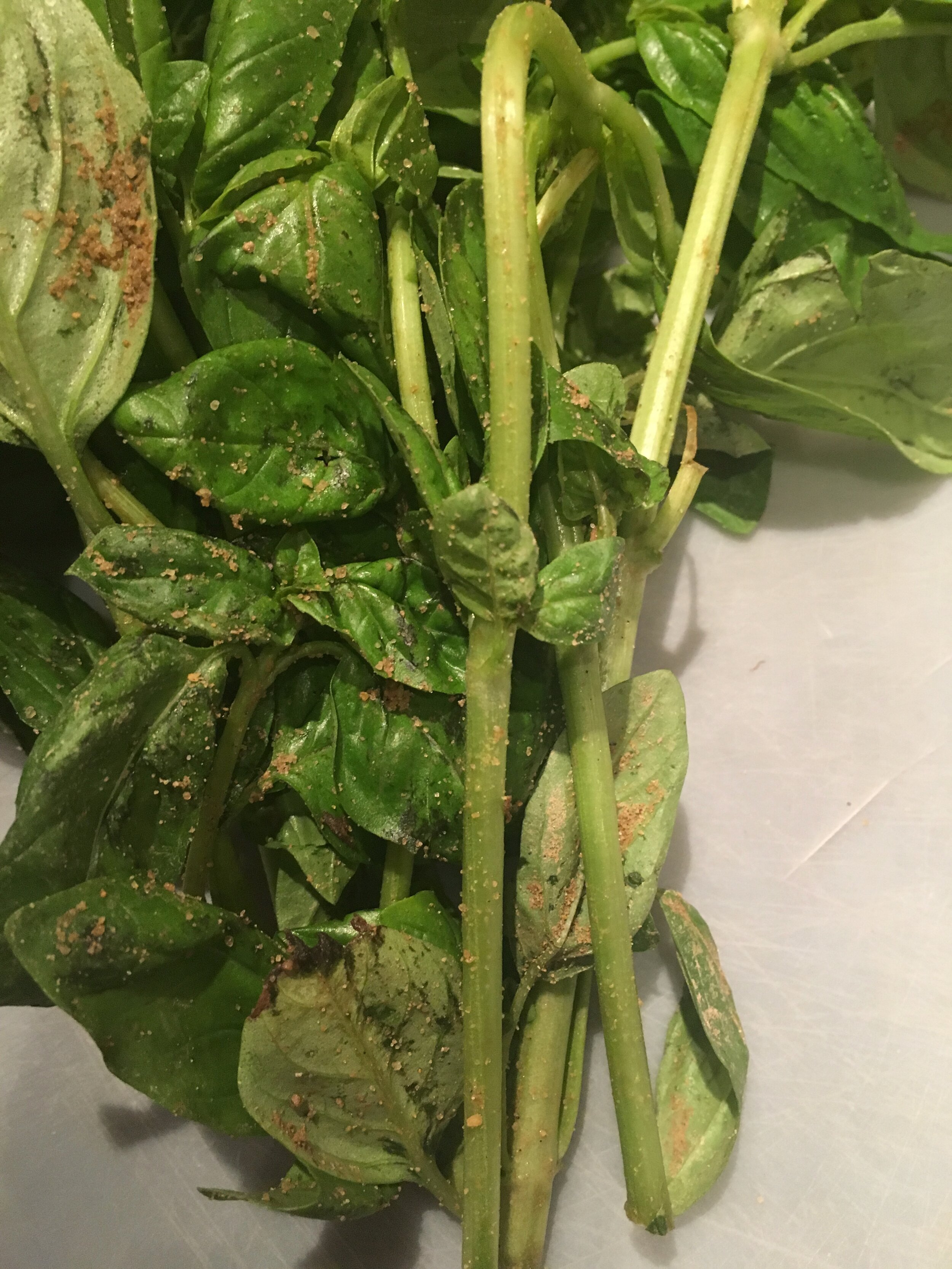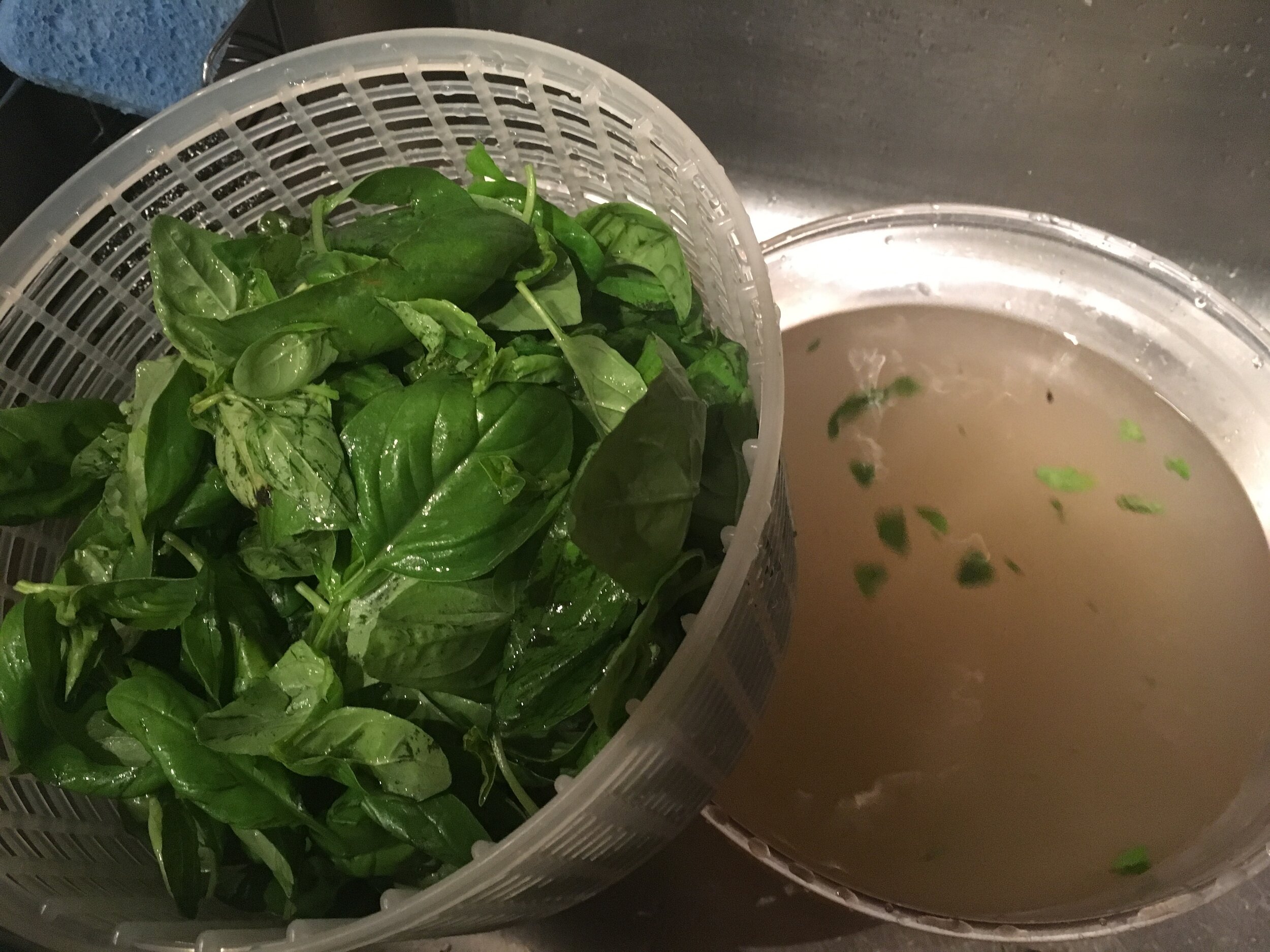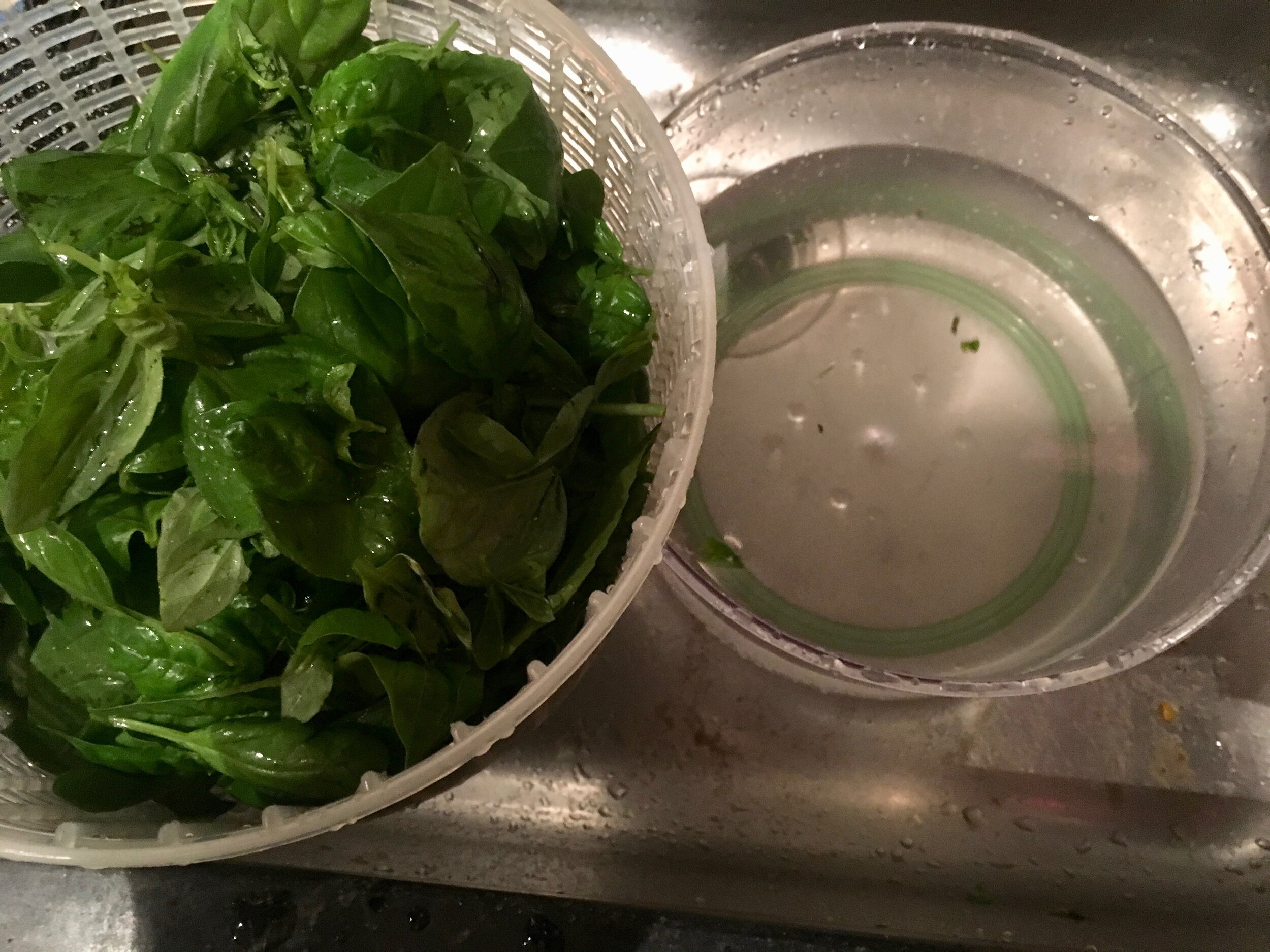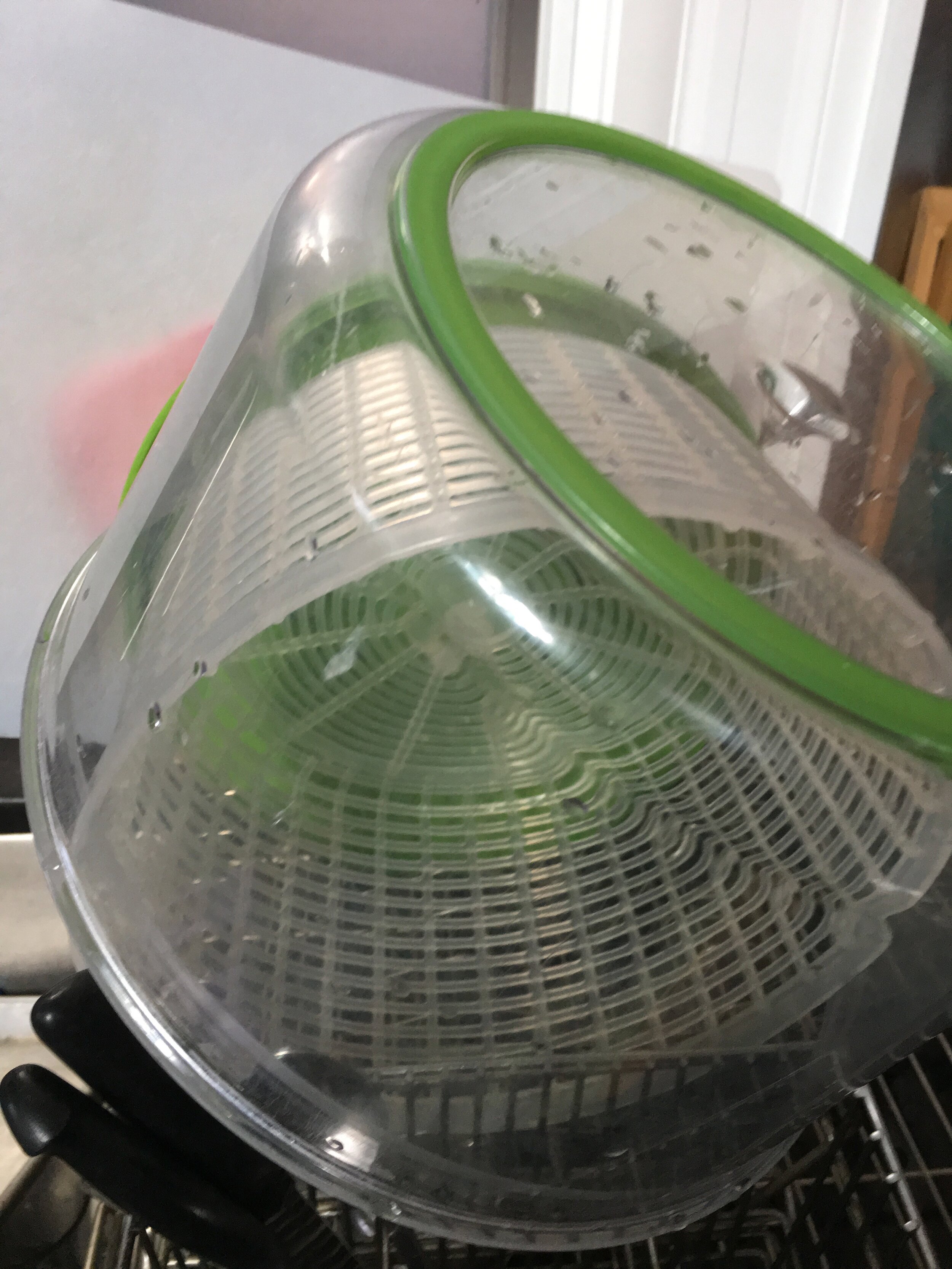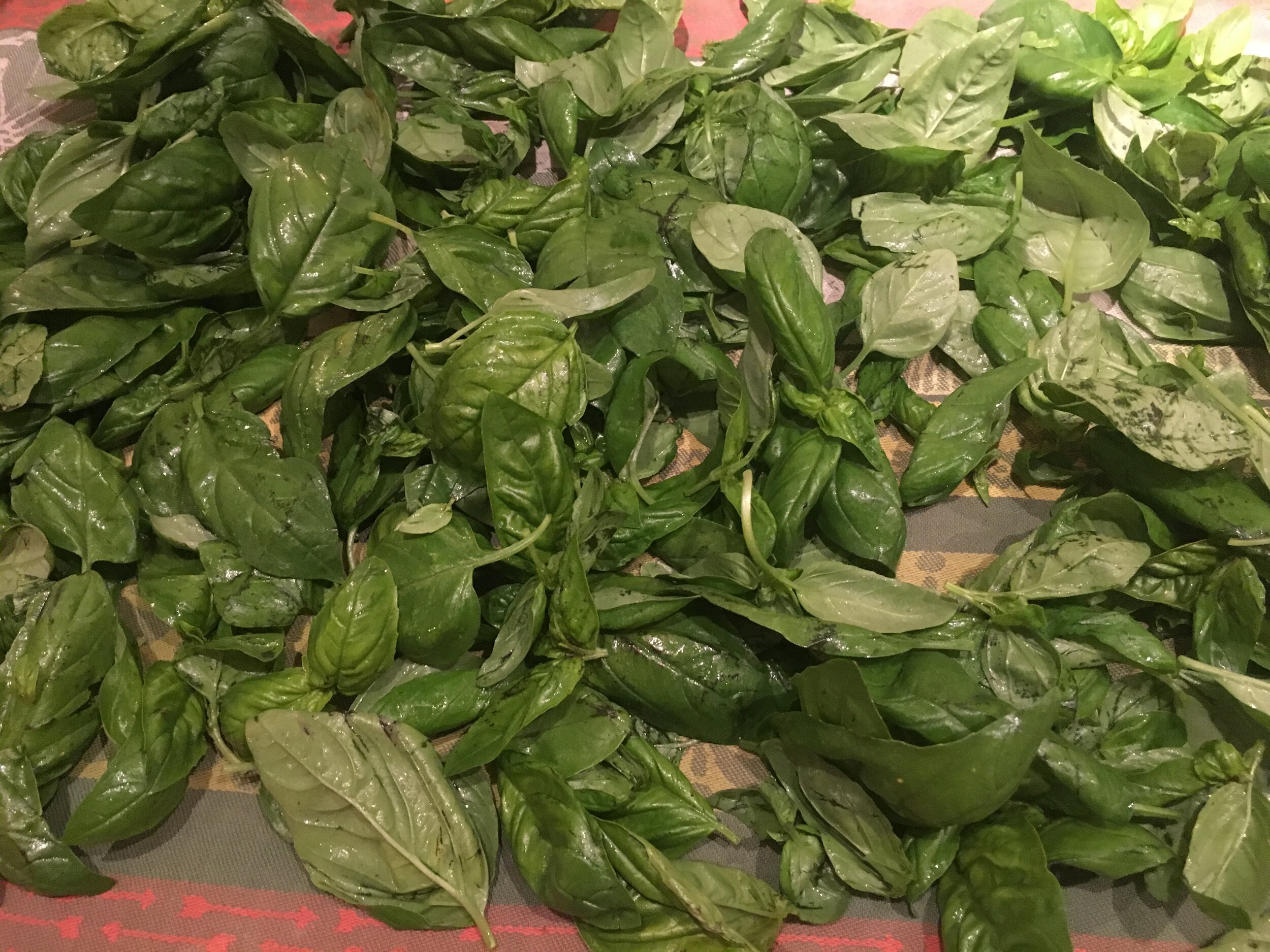Three kinds of pesto
Pesto Tips
Basil, Arugula and Cilantro Pesto recipes
Cilantro Pesto
4 oz. cilantro (2 large bunches)
2 oz. parsley (1 large bunch)
3 garlic cloves + ½ tsp. salt
1 cup sunflower oil
½ cup olive oil
2 oz. raw cashews (½ cup)
1 oz. tahini (raw sesame seed paste) 2 tablespoons
3 oz. pumpkin seeds (½ cup)
¾ t. dry harissa
2 tablespoons of lime juice
1 t. salt
Yields: 4 cups
Arugula Pesto
4-5 oz. arugula
4 oz. grated Parmesan
1.5 oz. picked parsley
2 garlic cloves + ½ tsp salt
1 ½ cups cup olive oil
6 oz. roasted almonds
1.5 tsp. salt
½-1 tsp cider vinegar
½ tsp. amchoor powder (dried mango powder) or lemon juice
Basil Pesto
4 oz. basil leaves (2 bunches)
2 oz. parsley leaves (1 large bunch)
2 garlic cloves + ½ tsp. salt
1 ½ cup olive oil
3.5 oz. grated Parmesan (2 packed cups)
2 oz. walnuts (½ cup)
4 oz. toasted pignoli nuts (1 cup)
2 tablespoons lemon juice
1 t. salt
Yields: 4 cups
Method:
Macerate the garlic with ½ tsp. salt with a mortar and pestle. Place washed/dried herbs in the blender pitcher. Add the nuts, seeds, spices, salt, garlic and acidic ingredients. Pour over the oil. Blend. Taste and season with additional acidic ingredients and salt.
Cooking techniques:
Macerating garlic for pesto, dips and other cold/and room temperature preparations:
I always macerate raw garlic with salt using a mortar and pestle (you can do this with a chef's knife — how to make garlic paste with salt and a knife). I often add lemon or lime juice as well. Salt tames the harshness of the garlic and acid brings out the flavor, leaving a solid underlying umami note to enhance the dip, pesto or other preparation.
Cooking techniques:
Quick meal prep:
Washing basil or other greens covered with sand and dirt
When I am buying a big bundle of pesto with the roots attached and sand all over the leaves, I often hear fellow shoppers comment that they never buy that basil because they can never get the sand off. And the same comments are uttered over dirty lettuce. People are drawn towards the pre-washed and dried, packaged lettuce and basil which is more expensive, not as fresh and aromatic and usually includes a hard plastic clamshell container, raising the carbon footprint of the purchase.
Just a side note: Washed, dried and packaged lettuce is not all bad — its carbon footprint is negotiable! About 20 years ago, at my CSA pick up, the farmer drew my attention to his beautiful washed mesclun lettuce. I asked him why he bothers with all the work and expense involved in washing, drying and bagging his lettuce when CSA members have already committed to buying his produce for the season. He told me that if he immerses his lettuce in very cold water right after harvest, removing all the sand and dirt and chilling the greens, and then dries the lettuce with super efficient lettuce spinners, he actually increases the yield and shelf life of his lettuce dramatically. When he refrigerates heads of lettuce after harvest without washing and drying them, he loses a fair amount of lettuce to rot before he gets the lettuce to consumers and CSA members. So the take-away, is that pre-washed, dried, packaged lettuce has better yields and lasts longer in the marketplace, hopefully being purchased and used before it ends up in the compost or trash.
A great tip for washing lettuce and dirty herbs at home — Immerse them in a bowl or salad spinner of cold water. Lift the greens out with a slotted spoon or colander. Discard the dirty water. Repeat this process again if the greens are especially sandy. Spin them really well, removing as much moisture as possible. And place the dried greens with a paper towel in a plastic bag. Refrigerate. Another added benefit to this effort is that salad making is much faster and simpler when you have these clean greens in your refrigerator.
Pick your dirty lettuce or herb leaves and immerse them in a large amount of cold water. Lift the leaves out of the water with your hands or using your basket. Discard the dirty water and repeat this process at least one more time.
Spin the leaves in a good lettuce spinner. Discard the water accumulating at the bottom of the lettuce spinner and spin the leaves again.
Lay out the leaves on a towel to air dry for 30 minutes.
Place the dry leaves in a plastic bag or vegetable bag with a paper towel and seal the bag. The leaves should keep in your refrigerator for a number of days. The paper towel helps to absorb any extra moisture on the lettuce and control the humidity in the bag.


